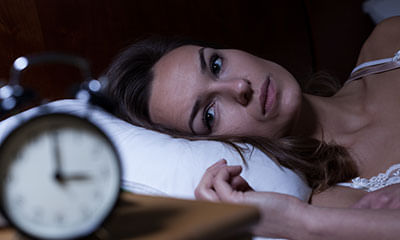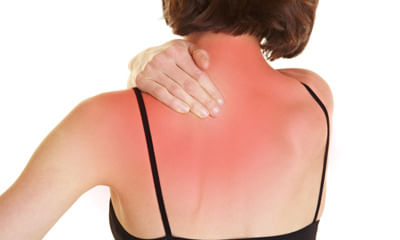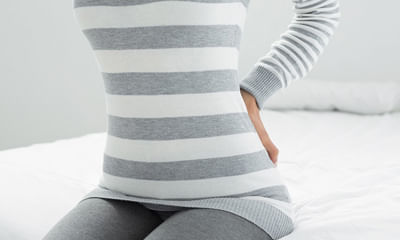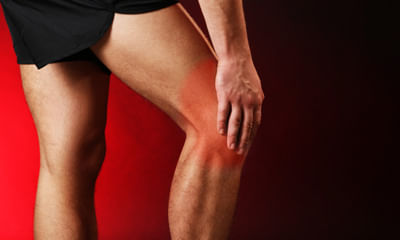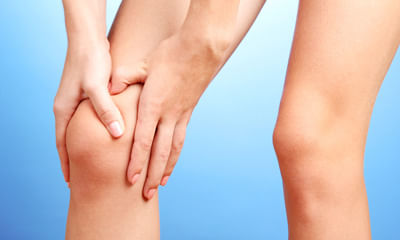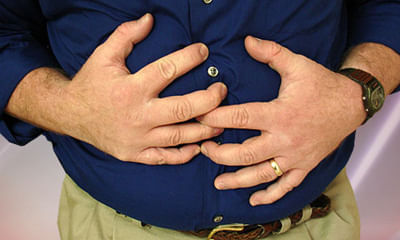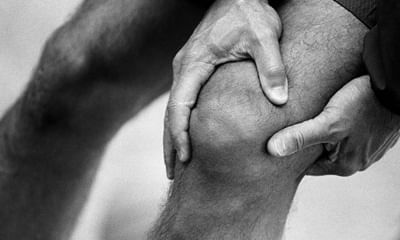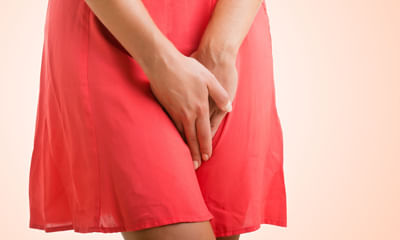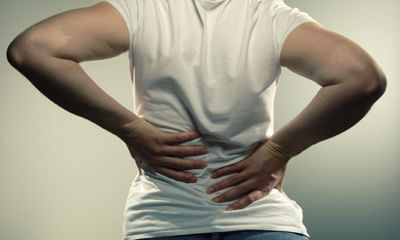Back Pain Worse At Night
Doctor my mother has osteoarthritis is it curable its in initial stage is it curable and may I know how long it takes to ...
Ask Free Question
Symptoms of arthritis symptoms of osteoarthritis may include joint pain and progressive stiffness that develops gradually. Symptoms of may include painful swelling, inflammation, and stiffness in the fingers, arms, legs, and wrists occurring in the same joints on both sides of the body, especially upon waking up in the morning. Knee arthritis can be painful and debilitating. For osteoarthritis (oa) of the knee, self-care early on can often help significantly. It is important to stretch and strengthen the surrounding leg muscles to provide more support and reduce stresses around the joint. The following best bet exercises will help you get started on your path to feeling stronger, more flexible and more active. Remember: exercise should not be painful – if you experience pain, discontinue and consult with your physician. Advice: 1.must take adequate rest 2.apply hot water with mild heat with cotton towel 3.avoid cross leg sitting and long time standing 4. Put the small size chair under the ankle during sitting in the chair for leg elevation 5.do the exercise given below 2 times per day 1.quadriceps setting exercise helps to strengthen the quadriceps muscle (the big muscle on the front of the thigh), an important stabilizer of the knee. Lie on your back with the leg you want to exercise straight. Place a small rolled towel underneath the knee. Slowly tighten the muscle on top of the thigh (quadriceps) and push the back of the knee down into the rolled towel. Hold contraction for 5 seconds and then slowly release, resting 5 seconds between each contraction. Perform 3 sets of 10 repetitions, 1 time daily. 2.straight leg raise also helps to strengthen the quadriceps muscle. Lie on your back with the leg you want to exercise straight. The other knee should be bent to support your lower back. Tighten the muscle on the top of your thigh and lift to the level of your other knee. Slowly lower. Perform 3 sets of 10 repetitions, 1 time daily. Knee pain •patellar tendinitis: •risk factor •a combination of factors may contribute to the development of patellar tendinitis, including: •physical activity. •running and jumping are most commonly associated with patellar tendinitis. Sudden increases in how hard or how often you engage in the activity also add stress to the tendon, as can changing your running shoes. •tight leg muscles. Tight thigh muscles (quadriceps) and hamstrings, which run up the back of your thighs, can increase strain on your patellar tendon. •muscular imbalance. •if some muscles in your legs are much stronger than others, the stronger muscles could pull harder on your patellar tendon. This uneven pull could cause tendinitis. •chronic illness. •some illnesses disrupt blood flow to the knee, which weakens the tendon. Examples include kidney failure, autoimmune diseases such as lupus or rheumatoid arthritis and metabolic diseases such as diabetes. •complications •if you try to work through your pain, ignoring your body's warning signs, you could cause increasingly larger tears in the patellar tendon. Knee pain and reduced function can persist if you don't tend to the problem, and you may progress to the more serious patellar tendinopathy. •prevention •to reduce your risk of developing patellar tendinitis, take these steps: •don't play through pain. As soon as you notice exercise-related knee pain, ice the area and rest. Until your knee is pain-free, avoid activities that put stress on your patellar tendon. •strengthen your muscles. Strong thigh muscles are better able to handle the stresses that can cause patellar tendinitis. Eccentric exercises, which involve lowering your leg very slowly after extending your knee, are particularly helpful. •improve your technique. To be sure you're using your body correctly, consider taking lessons or getting professional instructions when starting a new sport or using exercise equipment. •therapy •a variety of physical therapy techniques can help reduce the symptoms associated with patellar tendinitis, including: •patellar tendon strap. A strap that applies pressure to your patellar tendon can help to distribute force away from the tendon and direct it through the strap instead. This may help relieve pain. •iontophoresis. This therapy involves spreading a corticosteroid medicine on your skin and then using a device that delivers a low electrical charge to push the medication through your skin. •platelet-rich plasma injection. This type of injection has been tried in some people with chronic patellar tendon problems. Studies are ongoing. It is hoped the injections might promote new tissue formation and help heal tendon damage. •probably your stamina would've gone down due to over use of the joints and the metabolic activity is more due to running. You need to consume good protein diet so that your body will act as a reservoir. It will help you to fight against rather than affecting one particular area of your body for eg. Knee joint. For knee ligament pain or inflammation you need to keep ice which will help you to prevent the inflammation progressing further. •patellofemoral pain syndrome •usually fully relieved with simple measures or physical therapy. It may recur, however, if you do not make adjustments to your training routine or activity level. It is essential to maintain appropriate conditioning of the muscles around the knee, particularly the quadriceps and the hamstrings. •there are additional steps that you can take to prevent recurrence of patellofemoral •they include: •wearing shoes appropriate to your activities •warming up thoroughly before physical activity •incorporating stretching and flexibility exercises for the quadriceps and hamstrings into your warm-up routine, and stretching after physical activity •increasing training gradually •reducing any activity that has hurt your knees in the past •maintaining a healthy body weight to avoid overstressing your knees •joints, ie. In the upper limbs if the pain is present in the fingers/wrist and in the lower limbs it the pain is present in the toes/ ankle, then we shall definitely say it is rheumatic arthritis. •if your proximal joints (ie. Shoulder, hip & knee has pain) then you can pour hot (warm) water in that area to reduce the inflammation. If you have pain in the distal joints ie. Wrist, fingers, ankle, toes then you can wear either elbow brace or wrist brace which will help you to feel warm and very protective. And also immerse the distal joints in the hot water tub which will help you to reduce the pain. •knee pain during driving or watching movie. •it might due to lack of movements in the knee while the joints are immobilized during driving and while watching movies. It is important that you need to have movements in and around the knee so that the blood flow will not be disturbed. •knee ligament laxity•if you have problem in your legs then it might be due to ligament laxity where your legs would become very weak due to the old ligament injury and that should be treated immediately. •wear knee cap so that you will feel firm while walking or climbing stairs.•this is a general strain and for this you can follow these measures: one keep a pillow right under the knee while sleeping, next is you can keep ice in the painful area for about 5--10 minutes, if pain still persists you can stretch your body by twisting the waist on both sides how we used to do in the school drill similarly you can try! one time you can do hot water fermentation that would help to reduce the muscle strain. •legs becoming numb and also pain is there when the patient walks for 10-15 minutes?•it looks like you are anaemic. If you feel that the legs are becoming numb then keep your legs warm which is important, probably you can wear mcr chappals inside the house/ socks inside the house. Put a door mat when ever you sit so that you will feel comfortable. Also pour warm water in the legs which would help you to get better circulation. •knee pain. If you are overweight, losing weight will also help to reduce pressure on your knee. Knee pain this is a general knee pain and for this you can follow these measures: one keep a pillow right under the knee while sleeping, next is you can keep ice in the painful area for about 5--10 minutes, it looks like you are is important to check that. Anaemia always leads to the symptoms of being tired and also having body pain though there may not be any pathological reasons for knee pain. With knee exercises you will definitely feel better and muscles must be strengthened .•don't play through pain. As soon as you notice exercise-related knee pain, ice the area and rest. Until your knee is pain-free, avoid activities that put stress on your patellar tendon. •strengthen your muscles. Strong thigh muscles are better able to handle the stresses that can cause patellar tendinitis. Eccentric exercises, which involve lowering your leg very slowly after extending your knee, are particularly helpful. •improve your technique. To be sure you're using your body correctly, consider taking lessons or getting professional instructions when starting a new sport or using exercise equipment. •therapy •a variety of physical therapy techniques can help reduce the symptoms associated with patellar tendinitis, includingback pain it looks like you are anaemic. If you have back pain after you sit for long hours then it is due to your haemoglobin levels as it is important to check that. Anaemia always leads to the symptoms of being tired and also having back / leg pain though there may not be any pathological reasons for back pain. It looks like you are anaemic. And also you have to check with your vitamin and calcium, if the bones are weak then automatically the pain gets triggered more as there is less severity of the painbe strengthened 1.resisted terminal knee extension: make a loop with a piece of elastic tubing by tying a knot in both ends. Close the knot in a door at knee height. Step into the loop with your injured leg so the tubing is around the back of your knee. Lift the other foot off the ground and hold onto a chair for balance, if needed. Bend the knee with tubing about 45 degrees. Slowly straighten your leg, keeping your thigh muscle tight as you do this. Repeat 15 times. Do 2 sets of 15. If you need an easier way to do this, stand on both legs for better support while you do the exercise. 2•standing calf stretch: stand facing a wall with your hands on the wall at about eye level. Keep as arthritis is very common that you get generally bilaterally. Ice therapy would definitely help to reduce the inflammation. We also advise you to use knee cap which would help to prevent the knee from damaging further and also to maintain the quadriceps muscle tone •stretching exercises. Regular, steady stretching exercises can reduce muscle spasm and help lengthen the muscle-tendon unit. Don't bounce during your stretch. 3•strengthening exercises. Weak thigh muscles contribute to the strain on your patellar tendon. Exercises that involve lowering your leg very slowly after extending it can be particularly helpful, as can exercises that strengthen all of the leg muscles in combination, such as a leg press.•this is a general knee pain and for this you can follow these measures: one keep a pillow right under the knee while sleeping, next is you can keep ice in the painful area for about 5--10 minutes, it looks like you are is important to check that. Anaemia always leads to the symptoms of being tired and also having body pain though there may not be any pathological reasons for knee pain. With knee exercises you will definitely feel better and muscles must be strengthened.
Doctor I am suffering from insomnia 1 year 2 months. Bp remains between systolic 130 and dystolic 99. It remains between ...
Ask Free Question
Your bp shoot and also your pain in the left hand and shoulder is due to the neck pain that's the reason your bp is shooted. Please follow the suggestions given below: neck pain cervical spondylosis– chronic condition with radiating pain this is cervical pain (neck pain) and that's the reason the pain radiates until the shoulder blades. If you keep ice that would help and along side you can do hot water fermentation. You shall use cervical collar which would help you to reduce the radiating pain ie. Due to the nerve compression. You have to go for traction and also you can do ift. Please consult the near bytherapist for quick relief. Use collar will definitely be helpful for him to maintain the good posture. And also cervical pillow can be used which might make you to have better posture of the shoulder neck and arm. Neck tilt: from the sitting position, tilt your head down so your chin touches your chest. Hold this position for 5 second s. Return to the starting position and repeat. Do this five times. Side-to-side neck tilt. From the same starting position, tilt you neck toward one shoulder, leading with your ear. Hold for 5 seconds and then return to the starting position. Do this five times on each side. Neck turn. Look straight ahead, then turn your head to one side, keeping your chin at the same level. Do this five times on each side. Neck stretch. Holding the rest of your body straight, push your chin forward, stretching your throat. Hold for 5 seconds. From the same starting position, push your chin backward and hold for 5 seconds. Do the forward and backward stretch five times each. If any of these exercises cause severe pain or weakness in your hands or arms, stop right away and talk with your doctor. We suggest you to wear cervical collar which will help you to improve the cervical angle and also it definitely helps you to improve the neck posture due to which your neck pain is triggered more. The importance of wearing cervical collar is to give good stability to the neck and also it definitely prevents you to have excess neck movements which makes the condition worse. If you wear cervical collar you cannot turn your neck as you like which itself will help you to have better functioning of the cervical spine. This cervical soft collar what we are suggesting for you is available at our clinic. If you want you can buy from us, if you are far away from chennai we can send you by courier. The reason why we are conveying you to buy from us is we can demonstrate over the videocall (using whatsapp) and also we can monitor you throughout when to wear it and how long to wear it. And also if you find any difficulty wearing the brace you can also revert back to us for few more suggestions and we can propose you good solution how to go about it. Pushups this one may seem basic, but there’s no denying that pushups are one of the best ways to strengthen the pectoral muscles. These can be done on the knees or toes. If you’re not ready for full pushups, start with your hands resting on a solid surface higher than your feet — like a very sturdy coffee table or the edge of a couch, cushions removed, that’s pressed up against a wall — and start on the toes. Having your hands higher than your feet and your body at an angle can be a good way to start a pushup regimen. As you get stronger, you can begin to lower the angle of your body. This will help you transition to full pushups more easily than going from knees to toes. A full plank engages the muscles differently, even at an angle. When doing pushups, aim for 2 sets of 10 reps per day. 1.start in plank position with your hands under your shoulders and your core engaged. 2.as you lower, inhale. 3.as you engage your muscles to push yourself up, exhale. Keep your elbows hugging in close to your body. Keep your focus on slowly breathing as you do these, and on engaging the pectorals while keeping the core tight. Don’t just crank these out to get them done — this can compromise your form and do more harm than good. If the movement is really tough, break the sets into three or five to start, or find a higher point to begin after a week of exercise. If necessary, you can even stand and do pushups pushing against a wall. Chest fly for this exercise, you’ll need a bench or exercise ball as well as some dumbbells. If you don’t have weights, you can always use the old standby: a soup can in each hand. Just keep in mind that dumbbells are easier to hold and you can get more out of using them, as even 5-pound weights are heavier than your heaviest canned goods. 1.lie with your upper and middle back on a bench or ball, with your legs at a 90-degree angle. Hold a weight in each hand and extend your arms to the sky, elbows slightly bent. 2.as you inhale, lower your arms out wide, until your elbows are at shoulder height. 3.as you exhale, raise your hands until they meet above your chest again. 4.do 2 sets of 10. If that feels pretty easy, up it to 2 sets of 15 or increase the weight you’re using. Dumbbell row strengthening your back muscles is an important component of treating pectusexcavatum. The dumbbell row targets your lat muscles. The way it’s described below also strengthens your core, another important component of treating the condition. You’ll need some dumbbells to complete this move — err on the lighter side if you’ve never done a row before. 1.hold one dumbbell in each hand with your arms extended. Hinge at the hips until your upper body reaches a 45-degree angle. 2.keeping your neck in line with your spine and your gaze straight down, pull your elbows straight back and squeeze between your shoulder blades. 3.extend your arms back to the starting position. Complete 2 sets of 10. Dumbbell rear delt fly another move to strengthen your back, a dumbbell rear delt fly also focuses on the lats, as well as the rhomboids and the traps. Choose a light pair of dumbbells to complete this move and ensure that you’re pinching your shoulder blades together at the top to get the most out of it. 1.hold one dumbbell in each hand with your arms extended. Hinge at the hips until your upper body reaches a 45-degree angle and bring the dumbbells together. 2.keeping your spine and neck neutral, inhale and push the dumbbells out and up to the side until your arms are parallel to the floor. 3.exhale and return to the start in a slow and controlled motion. Complete 2 sets of 10. Exercise is a key component to treating pectusexcavatum. By strengthening your chest, back, and core muscles and stretching your chest cavity, you can combat the condition’s effects. Aim to complete these exercises several times a week to maximize results. Anterior pelvic tilt 1.lie on the back with the knees bent and feet flat on the floor, hip-width apart. 2.squeeze the buttocks and tilt the pelvis upward. 3.the back should feel as though it is flattening to the ground. 4.return to normal pelvis position. 5.repeat 10–12 times.
I had hip impingement surgery in 2021. I’ve been having foot and ankle pain since. It’s recently have gotten worse with ...
Ask Free Question
Stretching and strengthening exercises or use of specialized devices may provide symptom relief. These include: physical therapy. A physical therapist can instruct you in a series of exercises to stretch the plantar fascia and achilles tendon and to strengthen lower leg muscles, which stabilize your ankle and heel. A therapist might also teach you to apply athletic taping to support the bottom of your foot. Night splints. Your physical therapist or doctor might recommend that you wear a splint that stretches your calf and the arch of your foot while you sleep. This holds the plantar fascia and achilles tendon in a lengthened position overnight and facilitates stretching. Orthotics. Your doctor might prescribe off-the-shelf or custom-fitted arch supports (orthotics) to help distribute pressure to your feet more evenly. Injections. Injecting a type of steroid medication into the tender area can provide temporary pain relief. Multiple injections aren't recommended because they can weaken your plantar fascia and possibly cause it to rupture. More recently, platelet-rich plasma has been used, under ultrasound guidance, to provide pain relief with less risk of tissue rupture. Lifestyle and home remediesto reduce the pain of plantar fasciitis, try these self-care tips: maintain a healthy weight. Lose weight if you're overweight or obese to minimize stress on your plantar fascia. Choose supportive shoes. Avoid high heels. Buy shoes with a low to moderate heel, good arch support and shock absorbency. Don't go barefoot, especially on hard surfaces. Don't wear worn-out athletic shoes. Replace your old athletic shoes before they stop supporting and cushioning your feet. If you're a runner, buy new shoes after about 400 to 500 miles of use. Change your sport. Try a low-impact sport, such as swimming or bicycling, instead of walking or jogging. Apply ice. Hold a cloth-covered ice pack over the area of pain for 15 to 20 minutes three or four times a day or after activity. Or try ice massage. Freeze a water-filled paper cup and roll it over the site of discomfort for about five to seven minutes. Regular ice massage can help reduce pain and inflammation. Stretch your arches. Simple home exercises can stretch your plantar fascia, achilles tendon and calf muscles. Prevention: maintain a healthy weight. Choose supportive shoes. Don't wear worn-out shoes. Heel pain apply ice use an ice pack or cold compress on your foot for 10 to 15 minutes at a time. This is especially beneficial at the end of a long day or when you’ve spent a lot of time on your feet. Or, roll a frozen water bottle under your foot. This method incorporates a bit of massage, relieving tightness in the bottom of your foot. Massage. Massaging the arch of your foot helps to relieve pain and promote mobility. Use your fingers and knuckles to deeply massage your foot for 1 to 5 minutes at a time. One technique is to place both thumbs at the center line of your arch and move them to the outer edges of your feet. Inserts. Use cushion inserts in your shoes for additional support and cushioning. Inexpensive options can be purchased off the shelf. Wear supportive shoes with thicker soles and extra cushioning for additional support that can help to reduce tension in the plantar fascia. Kinesiology tape can be used to improve arch and heel support. Night splints. Many people find quick and effective results by using night splints. They can be worn while sleeping to stretch the plantar fascia. They help to keep the plantar fascia relaxed and prevent you from pointing your feet down. Exercise foot flex use your hand to pull your toes back toward your shin. Hold this position for about 30 seconds .do each side two to three times. Toe towel grab place a small towel under your foot. Curl your toes to grip the towel. Raise the front of your foot off the floor. Hold this position for a few seconds. Release the towel as you lift up your toes and spread them as far apart as possible. Heel and calf stretch to do this stretch: 1.stand facing a wall. 2.place your hands on the wall and move one foot back as far as you can comfortably. Toes on both feet should be facing forward, heels flat, with a slight bend in your knees. 3.lean into the stretch and hold for 30 seconds. You should feel the stretch in your back leg. 4.change legs and repeat. 5.do this stretch twice for both legs. Golf ball roll roll a golf baell under your right foot. Continue for up to 1 minute. Do each foot two to three times.
1) I suddenly had a striking pain in my back, more severe on left side while I was doing my child's project. 2) my grand ...
Ask Free Question
Back pain back pain exercises; kindly do these exercises. Back pain is described as acute or chronic based on how long you’ve had it. Acute pain lasts days to weeks, subacute pain lasts six weeks to three months, and chronic pain lasts longer than three months. Things that make it better or worse back pain may get worse with movement or if you sit or stand for a long time. It may get better if you switch positions or walk around. Other symptoms you may experience with back pain include: •the painful spot looking swollen and feeling tender to the touch •a muscle spasm in the painful area •numbness or weakness in one or both of your legs (if the pain is due to a nerve issue) if you find you have back pain and can’t hold your urine or bowel movements, something is pressing on your spinal nerves, and you should be evaluated immediately. This condition, called cauda equina syndrome, can cause severe long-term damage to your spinal nerves if not treated right away. 6 imbalances that cause pain—and how to fix them "pain is a medical condition and a medical issue, says brett jones, owner of applied strength in pittsburgh who is certified for the functional movement screen, a system of tests and cor rective exercise strategies. "it's a warning sign. The pain is there to tell you something's wrong. And that warning sign could be more serious than "you're going too hard. Jones and the other coaches consulted for this piece all had a horror story to tell-when pain in a client meant a more serious condition such as a nerve issue, thyroid issue, or even cancer. The point: if you experience regular pain while exercising-or when you're not-go to the doctor. If you've been cleared by a doc and you're still feeling discomfort, try these simple tests to see what's truly causing the pain-it could be related to an imbalance in a completely different part of your body. The good news: with these drills, stretches, and corrective exercises, you may be able to fix them-no doctors necessary. 1. Standing extension how it helps – this standing extension helps reverse what you do on a daily basis (hunching)… since most bulging discs and herniated discs are caused by poor posture and repeated flexion of the spine (esp bending fwd in bad posture), this stretch helps push the disc back to neutral position. How to do it – begin this exercise by standing up with good posture. Now take both hands and place them on both sides of your lower back. Now with the help of your hands push your pelvis forward and extend your spine back. Follow the extension with your neck so that you end up facing the ceiling. – start with 10 repetitions and do 2-3 sets. – this one is particularly great to do when you need a break from sitting at your desk. ** this should not cause any pain. If you feel pain during it is not a good one for you. In that case, stop and try some of the other exercises below instead. 2. Half cobra pose (prone lumbar extension) how it helps – the half cobra stretch helps to push the disc material back towards the center of the inter-vertebral disc to allow for improved healing. The goal of repeated lower back extension is the “centralization of symptoms”, which basically means pain that travels down the affected leg to the foot should come back up closer to the low back – which will in turn alleviate the pain. How to do it – begin this exercise by lying on your stomach (prone position) and slowly prop yourself up on your elbows while keeping your hips in contact with the floor. – hold the prop-up position for 10-15 seconds before returning to the prone position (lying face down). – gradually increase to holding the end position for 30 seconds. Aim for 10 repetitions of this stretch. ** initially, you may not be able to tolerate this position very well, so make sure you start slowly and carefully. If there’s any pain, try a different exercise instead. 3. Full cobra pose (advanced extension) how it helps – this stretch is based on the same principle as the half cobra pose above. This advanced extension helps to push disc material back towards the center of the intervertebral disc, with the goal of alleviating pain symptoms. How to do it – once you’ve mastered the half cobra pose, you can increase the difficulty by moving to the advanced version of this stretch. Begin this exercise by lying on your stomach in the prone position (lying facing down) and slowly press up on your hands while keeping your pelvis in contact with the floor and lower back relaxed. – hold the prop-up position for 10 seconds. Aim for 10 repetitions of this stretch. – eventually try to hold this pose for longer if it feels good (20-30 seconds). ** if you feel pain during this exercise, it is not a good one for you. In that case, stop and try some of the other exercises instead. 4. Cat-cow how it helps – this is one of the most popular herniated disc exercises. By combining two yoga poses, the cat-cow stretch can help to relieve pressure on the herniated disc by opening the intervertebral disc space. It also improves mobility of the spine, which may help to relieve disc herniation pain and speed recovery. How to do it – begin this stretch on your hands and knees. Inhale and let your stomach “drop” towards the floor as you look up towards the ceiling. – follow this by exhaling and slowly rounding your spine while pressing into the floor with your hands and slightly curving your neck to look at your feet. – aim for 10 repetitions of this stretch and do 2-3 sets. How it helps – this exercise will help strengthen and stabilize your lower back and deep spine muscles. This will help you to maintain a good posture and avoid future episodes of herniated discs. How to do it: – begin on your hands and knees with your hands positioned under your shoulders and knees positioned under your hips. – raise your left arm and reach it forwards until it is aligned with your torso; at the same time, kick your right leg backwards until is it aligned with your torso.
I play cricket alot but while playing cricket whenever I throw with a horizontal arm my shoulder starts to pain alot and ...
Ask Free Question
The rotator cuff is a group of four muscles and tendons that help stabilize the shoulder. They also aid in movement. Every time you move your shoulder, you are using your rotator cuff to stabilize and help move the joint. The rotator cuff is a commonly injured area. The most common injuries are strains, tendinitis, and bursitis. Causes: rotator cuff injuries can range from mild to severe. They tend to fall into one of three categories. Tendinitis is an injury caused by overuse of the rotator cuff. This causes it to become inflamed. Tennis players, who use an overhead serve and painters who have to reach upward to do their jobs commonly experience this injury. Bursitis is another common rotator cuff injury. It’s caused by inflammation of the bursa. These are fluid-filled sacs that sit between the rotator cuff tendons and the underlying bone. Rotator cuff strains or tears are caused by overuse or acute injury. The tendons that connect muscles to bones can overstretch (strain) or tear, partially or completely. The rotator cuff can also strain or tear after a fall, a car accident, or another sudden injury. These injuries typically cause intense and immediate pain. Symptoms: not all rotator cuff injuries cause pain. Some are the result of degenerative conditions, meaning the rotator cuff could be damaged for months or years before symptoms start to appear. Common rotator cuff injury symptoms include: •avoiding certain activities because they cause pain •difficulty achieving full range of shoulder motion •difficulty sleeping on the affected shoulder •pain or tenderness when reaching overhead •pain in the shoulder, especially at night •progressive weakness of the shoulder •trouble reaching behind the back if you’ve been experiencing any of these symptoms for longer than a week or lose function in your arm, see your doctor. Risk: rotator cuff injuries can be acute or degenerative. Acute injuries usually occur from one particular incident. These can be caused by lifting objects that are too heavy, falling, or having the shoulder forced into an awkward position. Young people are more likely to experience this type of rotator cuff injury. Degenerative injuries are due to long-term overuse. People most at risk for these injuries include: •athletes, particularly tennis players, baseball players, rowers, and wrestlers •people with jobs that require repetitive lifting, such as painters and carpenters •people above 40 years of age treated: treatments range from resting the affected arm to surgery. Tendinitis can progress to a rotator cuff tear, and that injury can get worse with time. Seeking treatment as quickly as possible helps keep the injury from progressing. Nonsurgical treatments improve symptoms in about 50 percent of people with a rotator cuff injury. These kinds of treatments include: •applying hot or cold packs to the affected shoulder to reduce swelling •exercises to restore strength and range of motion •injecting the affected area with cortisone, a steroid that helps to reduce inflammation •resting the affected arm and wearing a sling to isolate arm motions •over-the-counter anti-inflammatory medications, such as ibuprofenand naproxen prevented: athletes and people with occupations that require using the shoulder should take frequent rest breaks. This can reduce the load on the shoulder. Exercises to strengthen the shoulder and encourage range of motion also can help. Ask your physical therapist for stretches and strengthening exercise to improve the function of your rotator cuff. In the case of shoulder pain, icing the affected area can help reduce swelling. Apply ice in a cloth-covered pack for no more than 10 minutes at a time. These activities can also help prevent re-injury.
I had pain in the rotator cuff of my left shoulder for almost a year now. My mri shows periarthritis and degeneration. D ...
Ask Free Question
Rotator cuff tear: the rotator cuff is a group of four muscles and tendons that help stabilize the shoulder. They also aid in movement. Every time you move your shoulder, you are using your rotator cuff to stabilize and help move the joint. The rotator cuff is a commonly injured area. The most common injuries are strains, tendinitis, and bursitis. Causes: rotator cuff injuries can range from mild to severe. They tend to fall into one of three categories. Tendinitis is an injury caused by overuse of the rotator cuff. This causes it to become inflamed. Tennis players, who use an overhead serve and painters who have to reach upward to do their jobs commonly experience this injury. Bursitis is another common rotator cuff injury. It’s caused by inflammation of the bursa. These are fluid-filled sacs that sit between the rotator cuff tendons and the underlying bone. Rotator cuff strains or tears are caused by overuse or acute injury. The tendons that connect muscles to bones can overstretch (strain) or tear, partially or completely. The rotator cuff can also strain or tear after a fall, a car accident, or another sudden injury. These injuries typically cause intense and immediate pain. Symptoms: not all rotator cuff injuries cause pain. Some are the result of degenerative conditions, meaning the rotator cuff could be damaged for months or years before symptoms start to appear. Common rotator cuff injury symptoms include: •avoiding certain activities because they cause pain •difficulty achieving full range of shoulder motion •difficulty sleeping on the affected shoulder •pain or tenderness when reaching overhead •pain in the shoulder, especially at night •progressive weakness of the shoulder •trouble reaching behind the back if you’ve been experiencing any of these symptoms for longer than a week or lose function in your arm, see your doctor. Risk: rotator cuff injuries can be acute or degenerative. Acute injuries usually occur from one particular incident. These can be caused by lifting objects that are too heavy, falling, or having the shoulder forced into an awkward position. Young people are more likely to experience this type of rotator cuff injury. Degenerative injuries are due to long-term overuse. People most at risk for these injuries include: •athletes, particularly tennis players, baseball players, rowers, and wrestlers •people with jobs that require repetitive lifting, such as painters and carpenters •people above 40 years of age treated: treatments range from resting the affected arm to surgery. Tendinitis can progress to a rotator cuff tear, and that injury can get worse with time. Seeking treatment as quickly as possible helps keep the injury from progressing. Nonsurgical treatments improve symptoms in about 50 percent of people with a rotator cuff injury. These kinds of treatments include: •applying hot or cold packs to the affected shoulder to reduce swelling •exercises to restore strength and range of motion •injecting the affected area with cortisone, a steroid that helps to reduce inflammation •resting the affected arm and wearing a sling to isolate arm motions •over-the-counter anti-inflammatory medications, such as ibuprofenand naproxen prevented: athletes and people with occupations that require using the shoulder should take frequent rest breaks. This can reduce the load on the shoulder. Exercises to strengthen the shoulder and encourage range of motion also can help. Ask your physical therapist for stretches and strengthening exercise to improve the function of your rotator cuff. In the case of shoulder pain, icing the affected area can help reduce swelling. Apply ice in a cloth-covered pack for no more than 10 minutes at a time. These activities can also help prevent re-injury. First aid for muscle strains:most muscle strains can be successfully treated at home. Mi nor muscle strains can be treated with rest, ice, compression, and elevation (rice). Rest avoid using your muscle for a few days, especially if movement causes an increase in pain. But too much rest can cause muscles to become weak. This can prolong the healing process. After two days, slowly begin using the affected muscle group, taking care not to overdo it. Ice apply ice immediately after injuring your muscle. This will minimize swelling. Don’t put ice directly on your skin. Use an ice pack or wrap ice in a towel. Keep the ice on your muscle for about 20 minutes. Repeat every hour on the first day. For the next several days, apply ice every four hours. Compression to reduce swelling, wrap the affected area with an elastic bandage until swelling comes down. Be careful not to wrap the area too tightly. Doing so can reduce your blood circulation. Elevation whenever possible, keep the injured muscle raised above the level of your heart.
Hello doctor 2 weeks later I have serious stomach condition. Loose motions like water I visit local doctor and get treat ...
Ask Free Question
1. Take home cooked, fresh light food. Take a lot of green vegetables n fruit. 2. Increasing the fibre in your diet is known to be as effective as injections for preventing further problems 3. Increasing your fluid intake which can help prevent further problems with haemorrhoids 4. Avoiding straining and constipation which is the most useful thing patients can do to prevent the problem coming back. If the fibre content of your diet is not sufficient to keep your stools soft, then a fibre supplement can help. 5. Maintain active life style 6. Curd is good for u. 7. Avoid fast foods, spicy n fried foods homeopathy has very encouraging results. Consult online with details.
I am 61 year old male suffering from left knee pain only when I sit on the floor. My left leg is week since my childhood ...
Ask Free Question
Ice therapy would definitely help to reduce the inflammation. We also advise you to use knee cap which would help to prevent the knee from damaging further and also to maintain the quadriceps muscle tone. Stiffness have developed due to weakness of the ligaments &inflammed cartilage. Specific knee exercises will also help ie. Keeping ball underneath the knee and keep pressing it. That's the simple exercise which will help you to strengthen the knee. • ultrasound- which heals the damaged tissues and heals • electric stimulation / ift- which reduces the pain • kinesiology taping • application of heat or ice • soft tissue massages or knee joint mobilization 5 do’s & don’ts to reduce your knee pain. 1. Don’t take too much rest- not only your body muscles may become weaker even your joint’s pain may become worse. Take consultation from your physiotherapist to guide you with knee pain exercises which are safe for your knees & keep doing it. 2. Do exercise– exercises help in strengthening the muscles, increase flexibility & also support your knee. You can also do swimming, walking, elliptical machines & bicycles, etc. 3. Don’t avoid your weight– excess weight may increase the stress on your knee and if you have inflammatory arthritis then it may become worse. You don’t need to have ideal weight, you just need to start working to reduce the weight. 4. Rice -this process is good for joint pain caused due to minor injury or an arthritis. • • r (rest) – give some rest to your knees. • I (ice) – massage your knees with ice to reduce swelling. • c (compression)- start wearing compression bandage. • e (elevation)- keep your knee elevated. 5. Don’t wear bad shoes- we actively wear shoes in our daily life for hours without noticing how it can affect your knees badly. So, if you are facing knee pain, then check your shoes first. Is it giving you good comfort? If not then change it urgently. The importance of buying braces and splints from us – orthopaedic support braces we suggest you to wear knee brace which is available at our clinic. If you want you can buy from us, if you are far away from chennai we can send you by courier. The reason why we are conveying you to buy from us is we can demonstrate over the videocall (using whatsapp) and also we can monitor you throughout when to wear it and how long to wear it. And also if you find any difficulty wearing the brace you can also revert back to us for few more suggestions and we can propose you good solution how to go about it. Resisted terminal knee extension: make a loop with a piece of elastic tubing by tying a knot in both ends. Close the knot in a door at knee height. Step into the loop with your injured leg so the tubing is around the back of your knee. Lift the other foot off the ground and hold onto a chair for balance, if needed. Bend the knee with tubing about 45 degrees. Slowly straighten your leg, keeping your thigh muscle tight as you do this. Repeat 15 times. Do 2 sets of 15. If you need an easier way to do this, stand on both legs for better support while you do the exercise. Standing calf stretch: stand facing a wall with your hands on the wall at about eye level. Keep as arthritis is very common that you get generally bilaterally. Ice therapy would definitely help to reduce the inflammation. We also advise you to use knee cap which would help to prevent the knee from damaging further and also to maintain the quadriceps muscle tone 1. Heel and calf stretch to do this stretch: 1. Stand facing a wall. 2. Place your hands on the wall and move one foot back as far as you can comfortably. Toes on both feet should be facing forward, heels flat, with a slight bend in your knees. 3. Lean into the stretch and hold for 30 seconds. You should feel the stretch in your back leg. 4. Change legs and repeat. 5. Do this stretch twice for both legs. Short arc quad / isometeric quad exercise the short arc quad exercise is a great way to really focus in on properly contracting your quadriceps muscles. Here is how you do it: lie on your back and use a yoga block or basketball to prop your knee up. Slowly straighten your bent knee until it is all the way straight. Tighten your quad muscle with your toes pointed toward the ceiling and hold it tight for five seconds. Slowly lower your leg down. Repeat for 15 repetitions. Quadriceps, isometric (strength) this exercise is for an injured right knee. Switch sides if the injury is to your left knee. 1. Sit on the floor with your right leg straight in front of you. Bend your left knee up and put your left foot flat on the floor. 2. Flex your right foot and tighten the thigh muscles of your right leg. Press the back of your right knee toward the floor. Don’t arch your back or hunch your shoulders. 3. Hold for 5 to 10 seconds. Then relax. 4. Repeat 10 times, or as instructed. 5. Do this exercise 3 times a day, or as instructed. 2. Quadriceps stretch to do this stretch: 1. Stand next to a wall or use a chair for support. Your feet should be shoulder-width apart. 2. Bend one knee so your foot goes up toward your glutes. 3. Grab your ankle and gently pull it toward your glutes as far as you can comfortably. 4. Hold for 30 seconds. 5. Return to the starting position and change legs. 6. Repeat 2 times on each side. Hamstring stretch • take a break from strenuous activities to allow the injury to heal. • use a cane or crutches to avoiding putting your full weight on your injured leg. • apply ice packs several times a day to relieve pain and reduce swelling. • wrap the injured area with a compression bandage or wear compression shorts to minimize swelling. • rest with your leg elevated above the level of your heart, if possible, to improve drainage and minimize swelling. To do this stretch: to do this stretch: 1. For this stretch, you can use a mat to add cushioning under your back. 2. Lie down on the floor or mat and straighten both legs. Or, if it’s more comfortable, you can bend both knees with your feet flat on the floor. 3. Lift one leg off the floor. 4. Place your hands behind your thigh, but below the knee, and gently pull your knee toward your chest until you feel a slight stretch. This shouldn’t be painful. 5. Hold for 30 seconds. 6. Lower and change legs. 7. Repeat 2 times on each side. Strengthening exercises 5. Half squat to do this exercise: 1. Get into a standing squat position with your feet shoulder-width apart. Place your hands on your hips or out in front of you for balance. 2. Looking straight ahead, slowly squat down about 10 inches. This is the halfway point to a full squat. 3. Pause for a few seconds, then stand up by pushing through your heels. 4. Do 2 to 3 sets of 10 repetitions. 5. Calf raises to do this exercise: 1. Stand with your feet shoulder-width apart. Position yourself next to a wall or hold on to the back of a chair for support. 2. Lift both your heels off the ground so that you’re standing on the balls of your feet. 3. Slowly lower your heels to the starting position. Control is important with this exercise for strengthening your calf muscles. 4. Do 2 to 3 sets of 10 repetitions. 6. Hamstring curl 7. Leg extensions to do this exercise: 1. Sit up tall in a chair. 2. Put your feet flat on the floor, hip-width apart. 3. Look straight ahead, contract your thigh muscles, and extend one leg as high as possible without raising your buttocks off the chair. 4. Pause, then lower to the starting position. 5. Do 2 to 3 sets of 10 repetitions for each leg. 8. Straight leg raises to do this exercise: 1. For this exercise, you can use a mat to add cushioning under your back. 2. Lie down on the floor with one leg bent and one leg straight out in front of you. 3. Contract the quadricep of your straight leg and slowly raise it up off the floor until it’s the same height as your bent knee. 4. Pause at the top for 5 seconds, then lower to the starting position 5. Do 2 to 3 sets of 10 repetitions for each leg. 9. Side leg raises to do this exercise: 1. Lie on your side with your legs stacked on top of each other. Cradle your head in your hand, and place your other hand on the floor in front of you. 2. Raise your top leg as high as you comfortably can. You should feel this on the side of your hips. 3. Pause briefly at the top, then lower your leg. 4. Do 2 to 3 sets of 10 repetitions for each leg. 10. Prone leg raises to do this exercise: 1. For this exercise, you can use a mat to add cushioning beneath you. 2. Lie on your stomach with your legs straight out behind you. You can let your head rest on your arms. 3. Engage your glute and hamstring muscles in your left leg and lift your leg as high as you comfortably can without causing pain. Be sure to keep your pelvic bones on the floor throughout this exercise. 4. Hold your leg in the lifted position for 5 seconds. 5. Lower your leg, rest for 2 seconds, then repeat. 6. Do 2 to 3 sets of 10 repetitions for each leg. Lifestyle and home remedies rest. Take a break from your normal activities to reduce repetitive strain on your knee, give the injury time to heal and help prevent further damage. A day or two of rest may be all you need for a minor injury. More severe damage is likely to need a longer recovery time. Ice. Ice reduces both pain and inflammation. A bag of frozen peas works well because it covers your whole knee. You also can use an ice pack wrapped in a thin towel to protect your skin. Although ice therapy is generally safe and effective, don't use ice for longer than 20 minutes at a time because of the risk of damage to your nerves and skin. Heat. You may experience temporary pain relief by applying a heat pack or hot-water bottle to the painful area on your knee. Compression. This helps prevent fluid buildup in damaged tissues and maintains knee alignment and stability. Look for a compression bandage that's lightweight, breathable and self-adhesive. It should be tight enough to support your knee without interfering with circulation. Elevation. To help reduce swelling, try propping your injured leg on pillows or sitting in a recliner.
I am 17 year old female. Having to pee very often has become very inconvenient at this point. It started getting bad few ...
Ask Free Question
Get urine test for routine and culture done also usg whole abdomen take sufficient amount of water and balance diet. Morning exercise and yoga needs to be done daily. Take can nothris 30 twice daily for next one week and get back to me.
I'm just 16 years old boy. Around 7-9 days ago, I suddenly had a back pain. It was around the right shoulder blade, or t ...
Ask Free Question
Do’s and don’ts for neck pain: do’s •do turn to one side while getting up from supine position. •use hot pack for your neck. •use towel roll under the neck during supine lying. •use pillow of normal thickness in side lying position. •do isometrics for neck. •arms should be supported in one of the three positions:•™ hands in pocket ™ •hands on thighs/or on table. •™ hand behind back with elbow straight. •in order to avoid holding the head in the same position for long periods, take break while driving, watching tv or working on a computer. •use a seat belt when in a car. •use cervical collar in case of giddiness. •retraction of shoulders every hour: move shoulders backward. Don’t’s •don’t sleep straight. •don t’ bend your neck. •avoid hanging of arms. •avoid sitting sitting for prolonged prolonged period of time in stressful stressful postures postures. •do not lift heavy weights on head or back. •do not drive for long hours; take breaks. •avoid habit of holding the telephone on one shoulder and leaning at it for long time. •do not take many pillows below the neck and shoulder while sleeping, •in order to turn around, do not twist your neck or the body; instead turn around by moving your feet first. Cervical spondylosis– chronic condition with radiating pain this is cervical pain (neck pain) and that's the reason the pain radiates until the shoulder blades. If you keep ice that would help and along side you can do hot water fermentation. You shall use cervical collar which would help you to reduce the radiating pain ie. Due to the nerve compression. You have to go for traction and also you can do ift. Please consult the near bytherapist for quick relief. Since you have pain for more than 10 years it is suggestible to go for cervical muscle strengthening exercise. Use collar will definitely be helpful for him to maintain the good posture. And also cervical pillow can be used which might make you to have better posture of the shoulder neck and arm. Neck tilt: from the sitting position, tilt your head down so your chin touches your chest. Hold this position for 5 second s. Return to the starting position and repeat. Do this five times. Side-to-side neck tilt. From the same starting position, tilt you neck toward one shoulder, leading with your ear. Hold for 5 seconds and then return to the starting position. Do this five times on each side. Neck turn. Look straight ahead, then turn your head to one side, keeping your chin at the same level. Do this five times on each side. Neck stretch. Holding the rest of your body straight, push your chin forward, stretching your throat. Hold for 5 seconds. From the same starting position, push your chin backward and hold for 5 seconds. Do the forward and backward stretch five times each. If any of these exercises cause severe pain or weakness in your hands or arms, stop right away and talk with your doctor.We suggest you to wear cervical collar which will help you to improve the cervical angle and also it definitely helps you to improve the neck posture due to which your neck pain is triggered more. The importance of wearing cervical collar is to give good stability to the neck and also it definitely prevents you to have excess neck movements which makes the condition worse. If you wear cervical collar you cannot turn your neck as you like which itself will help you to have better functioning of the cervical spine. This cervical soft collar what we are suggesting for you is available at our clinic. If you want you can buy from us, if you are far away from chennai we can send you by courier. The reason why we are conveying you to buy from us is we can demonstrate over the videocall (using whatsapp) and also we can monitor you throughout when to wear it and how long to wear it. And also if you find any difficulty wearing the brace you can also revert back to us for few more suggestions and we can propose you good solution how to go about it.


